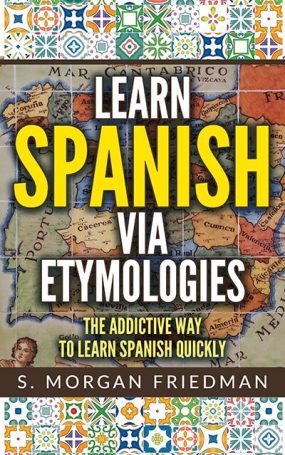The Latin pensare meant “to weigh”, in both senses: “to weigh something, such as gold, to get its value, usually to make a payment” or “to think about something deeply”.
From this word, we get a few Spanish words, including:
- Pensar – to “think”, just a simplification and lightening of the original.
- Pesadilla – with the diminutive -dilla ending added, it means “nightmare”. A dream is really just a small thought!
From the same Latin root, we get a few English words including:
- Pensive – with the same original meaning as the Latin.
- Compensate – which originally meant, “to counterbalance”, precisely what you do with a balance of justice!
- Pansy – which is basically an insult for someone who spends too much time thinking!
- Span – which originally meant to bind and came from the original sense of weighing.
- Poise – originally meant, “to have a certain weight,” which then came to mean “to have a certain look”.
The p-n-s root (sometimes without the ‘n’) is visible in all words.
 The Latin sounds for “sh” — and similar variations, like “ch” and “ss” — became a “j” sound in Spanish.
The Latin sounds for “sh” — and similar variations, like “ch” and “ss” — became a “j” sound in Spanish.
